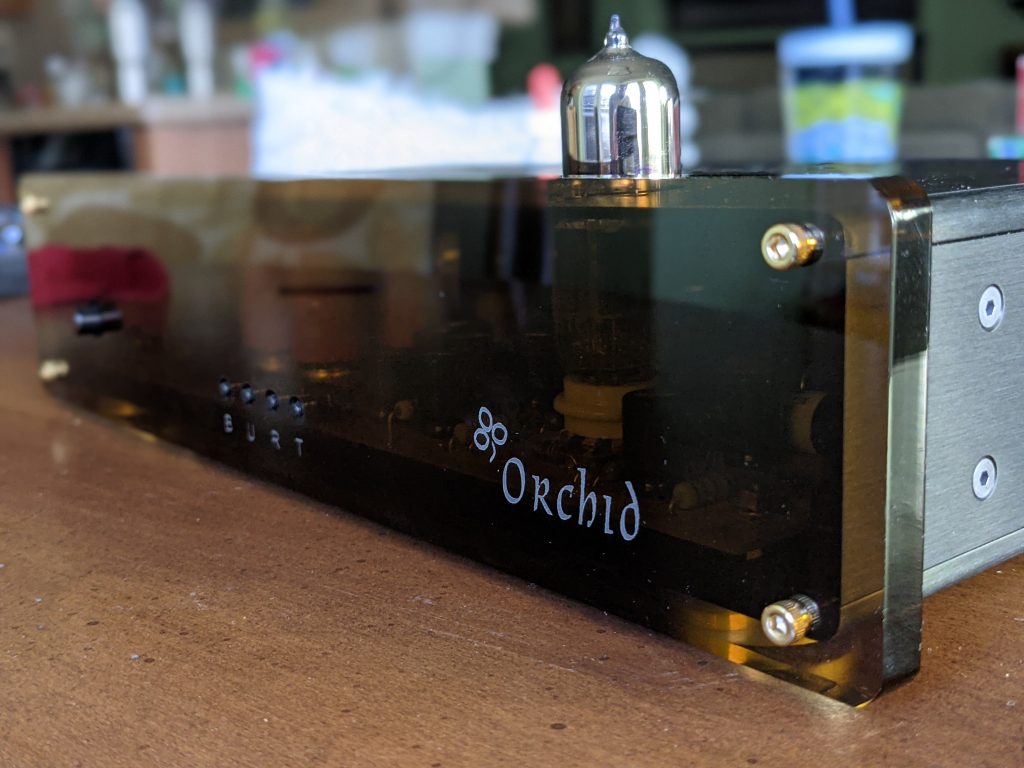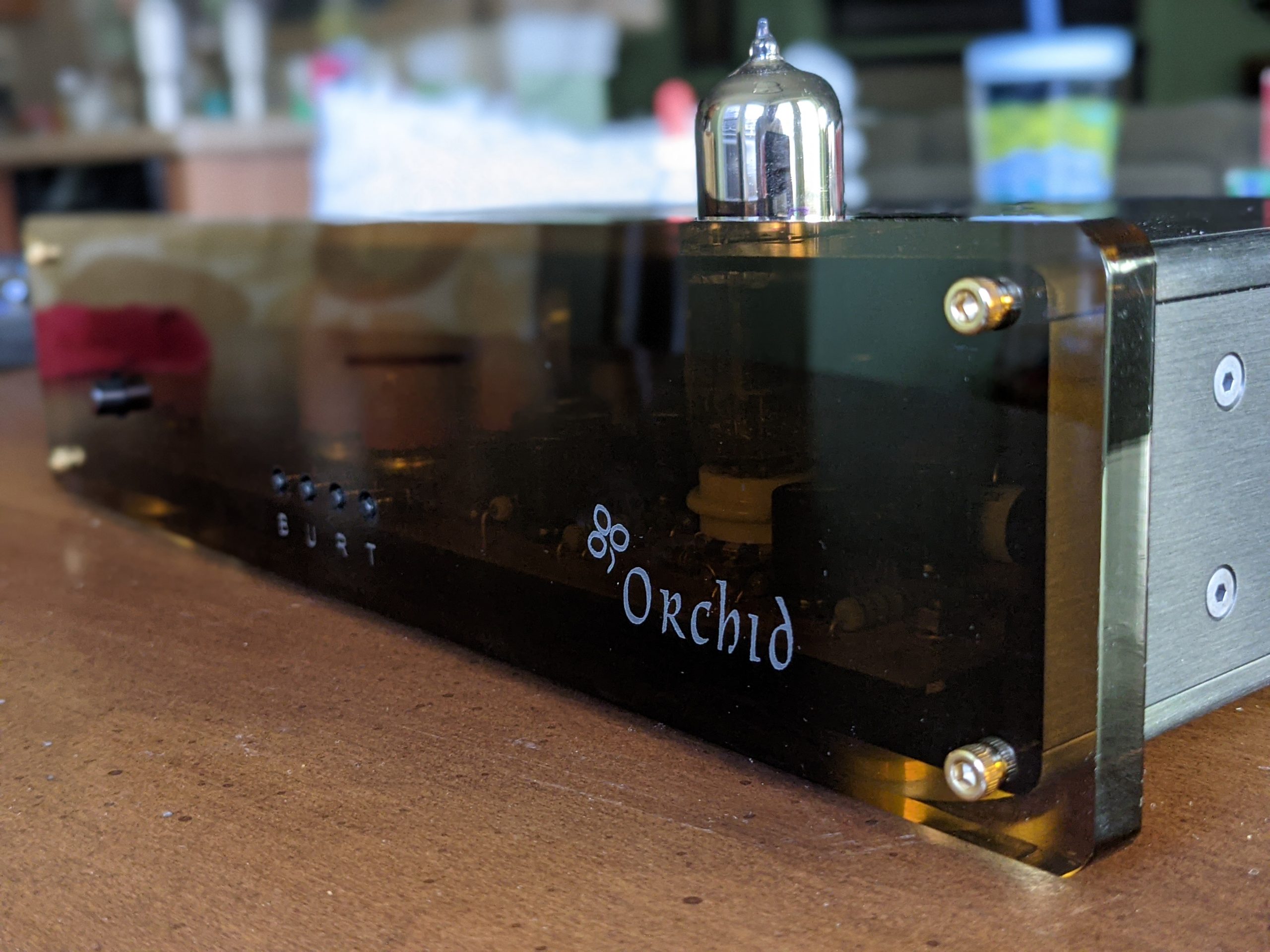It should be no mystery by now that I’m an avid fan of the TDA1541 monolithic D/A Converter. Despite its inability to keep up with the latest and greatest in absolute resolution, it still manages to impress due to (what people describe as) its innate musicality.
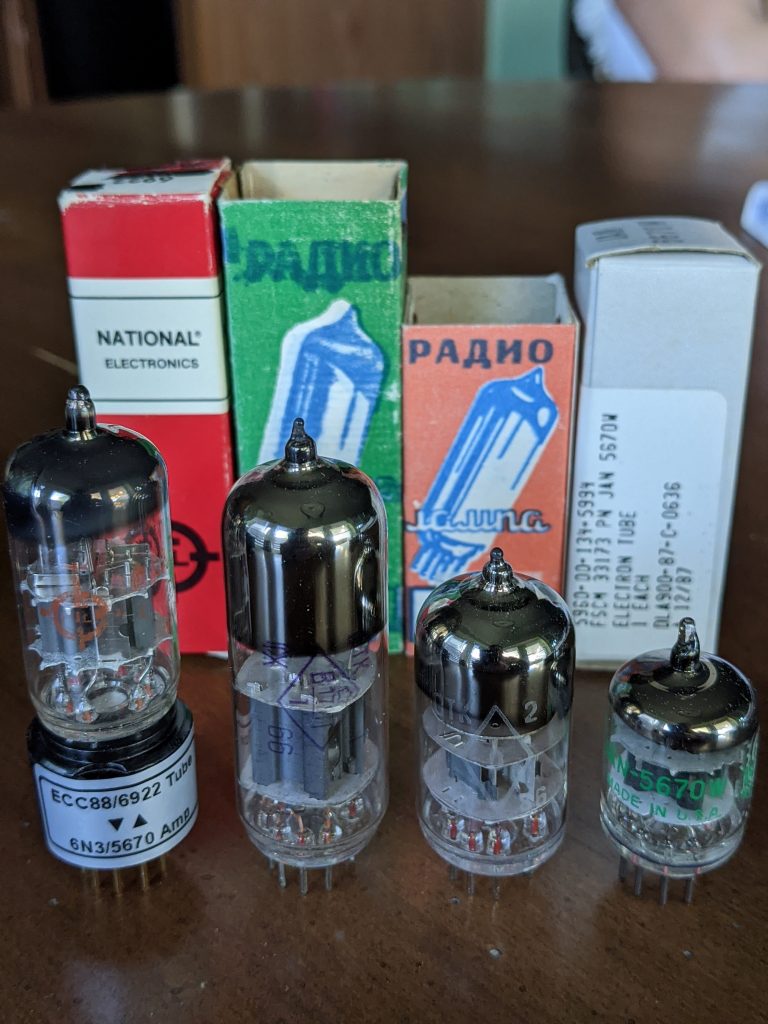
The manufacturer, MHDT, makes a variety of DAC’s. There’s one thing though that connects them all – the use of a vacuum tube acting as the output buffer. In their words, doing so imparts the magic of vacuum tubes in the music that we listen to. Something I think everyone can agree upon is that tubes definitely do impart something unto the signal that passes through them. Whether it is beneficial or detrimental varies from person to person.
I’m of the opinion that, done right, vacuum tubes can be more enjoyable than their solid state equivalent. Saying that goes against my engineering background, but it’s an opinion that I’ve cultivated over the last 12 years. Moving onto the subject at hand, the MHDT Orchid marries two of my favorite components – the TDA1541 and vacuum tubes.
Even though this comes after the Audial S4 that I reviewed some time ago, I’ve been in possession of the Orchid for far longer. So, without further ado, let’s start getting into the nitty gritty.
What’s a TDA1541?
I’m going to steal a little blurb from when I reviewed the Audial S4. Since both use the same chip at their core, I think it’s only fair to mention the same here.
The Philips TDA1541 can be considered by some to be the precursor to all modern D/A Converters. Introduced in the mid-late 80’s (with production ceasing around 1995), it was revolutionary to the market.
EA Review of the Audial S4
I won’t go into too much detail about the inner workings, because the fine fellows over at DutchAudioClassics already have a great article explaining things.
The major point to make though is that this is not a delta-sigma chip, like everything modern. Nope, it’s tried and true multi-bit. Like all chips back then, it was expensive to produce (at the time) and they ran hot. As such, it’s never been a recommendation to leave them powered 24/7 but instead save that for when you’re doing the actual listening
I go on to talk about my thoughts on 16 vs 24-bit music and what is realistically audible. At the end of the day though, 16-bits of performance should be enough if the DAC is transparent enough in its performance. While this was definitely the case with the S4, it will be interesting to see how the Orchid fares.
Basic Specifications
This is one area that I wish more in-depth specifications were offered. We’re only given the bare minimum. The frequency response is listed as 20Hz – 20kHz +-2dB. Not spectacular, but I imagine this is mostly due to the vacuum tube output stage.

The output impedance is a cool 32ohms with an output level of 3Vrms, which is wonderful for driving just about anything. Besides that, we don’t get much else. We know that the TDA1541 is capable of about 90-92dB of dynamic range when dithering is taken into account. While I doubt the Orchid is anywhere up to those standards, I would hope to see at least 80+. Now don’t take that number the wrong way. While that is in no way competitive against modern options, it would still be fine for most music and be quieter than most speakers on the market. Perhaps I should send the Orchid to AudioScienceReview to have them see where it really lies.
Taking a look at the build, we can see that the front is Acrylic with aluminum sides. While this doesn’t scream ultra high-end, it still feels solid in the hands. I actually appreciate the faceplate being semi-transparent as it lets you see the tube’s glow. On the front, you’ll find the power button (far left) along with four others for switching input. Each letter refers to the first letter of the input: B(nc), U(sb), R(ca), and T(oslink).
On the back-side we find the standard fare of inputs and outputs for a single-ended DAC. One nice feature that you don’t see too often though is a real 75-ohm BNC connection. Before the advent of USB for audio, this was my favorite method because of its secure connection. At the top of the back panel, we see vents to aid in heat dissipation. Again, unlike newer offerings, the TDA1541 is power hungry chip.
Inside The Chassis
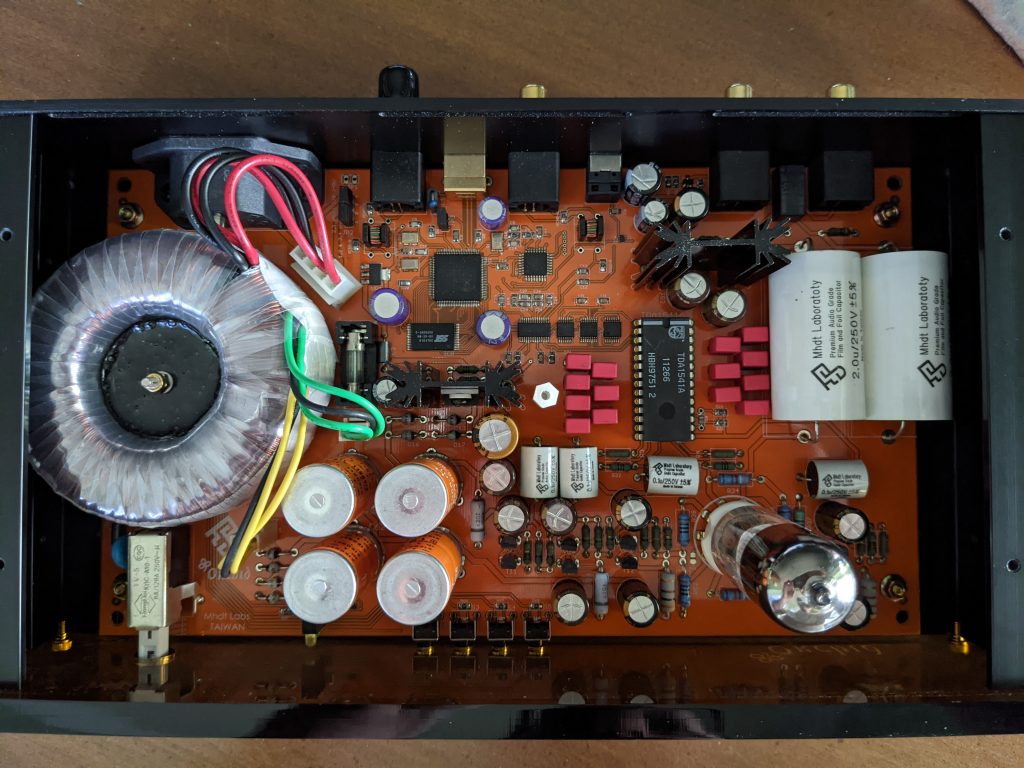
Looking inside the petite chassis revealed some interesting surprises. The first thing that stands out is that MHDT has their own labeled capacitors. It’s an interesting choice when there are other popular choices to be had. I’m sure the quality of their capacitors is fine, it’s just interesting. I can’t necessarily say that it’s a cost saving method since the DAC isn’t cheap. Still though, based on overall performance I think this will be fine.
One thing that’s very nice to see is a toroid transformer. It’s something you don’t often see at this price point, often being replaced with something cheaper. Not only that, but it takes up a good percentage of the overall chassis space. I tried getting a picture of the specifications, but was unable to do so. If I’m able to, I’ll update this post with those details.
In the center, we see the the star of the show. It should be noted that the Orchid actually ships with an R1 version of the chip, which is the lowest grade. While I think the technical performance of this grade is fine, I went ahead and replaced mine with a much newer and higher performing N2. For the purposes of this review, I will be using the newer chip and not the one that came stock. This was a roughly ~$100 upgrade purchased directly from Dutch Audio Classics.

On the bottom right-and side, we can see the vacuum tube. The stock tube is a JAN 5670W miniature twin-triode. And when I say miniature, I mean it. It’s roughly half the size of your standard 12AX7 while still using the same 9-pin socket.
For the purposes of this review, I replaced the stock tube with a Russian Reflektor 6N26P made in the 70’s and 80’s. They’re fairly cheap to buy off of ebay, but among all of the tubes that I’ve tried, it is one of my favorites.
Enough inside of the chassis. Let’s close her back up.
About the System
A quick note about the accompanying components so as to set the stage. On the streaming side, I have my Roon Core connected directly to the Orchid via USB. The input signal is being dithered to 16-bits, as I personally think it sounds better than letting the last 8 bits be truncated.
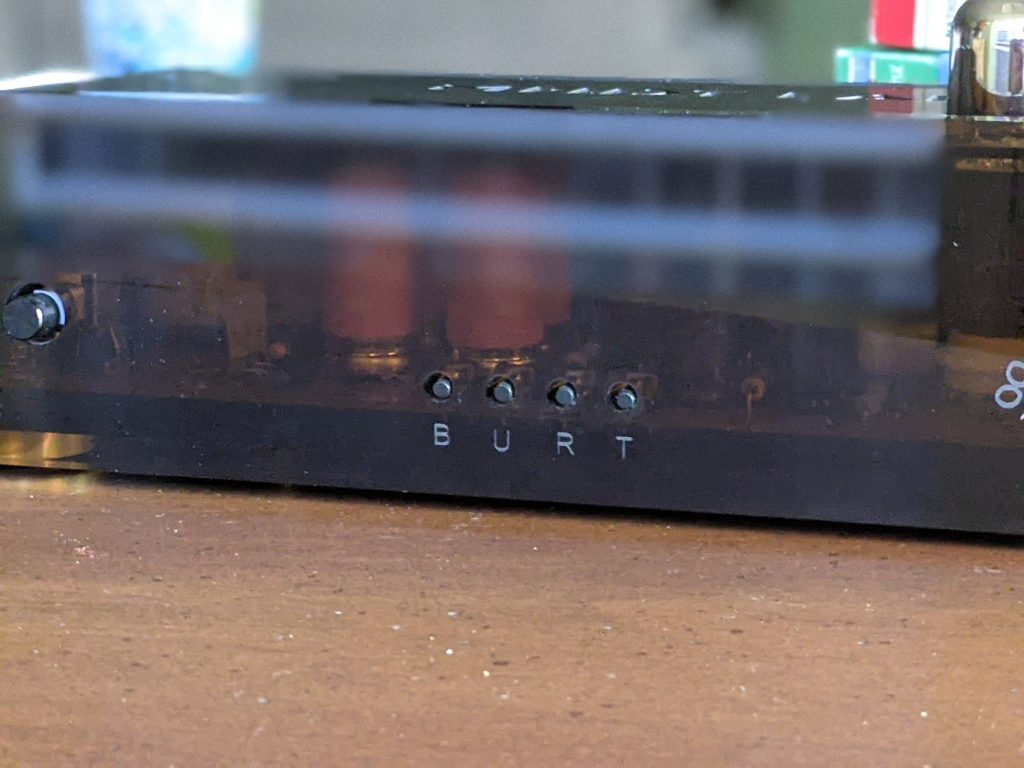
On the amplification side, we’re using my reference Rega Osiris. Despite the Osiris being a bit long in the tooth (it was released in 2010), I have yet to find a suitable replacement that gets my feet tapping. I know that’s bound to upset some folks whom care about measurements first. I get it, I have Hypex and Purifi amps that I enjoy (and hope to review soon as well), but neither of them have displayed my Osiris yet.
On the speaker side of things, the Selah Audio Ritorno monitors are connected. These are speakers that just continue to blow me away with their design and sound. It’s hard to believe the bass output and punch that these are capable of. On top of that, they use my current favorite ribbon tweeter.
I consider both the amp and speakers to be reference class and 100% capable of revealing the true nature of any preceding component in the system.
How Does it Sound?
Something that is generally agreed upon for vacuum tubes is the character they impart on the music. For some, this is a dryness, for others a lush midrange. When I listen to vacuum tube anything, am listening to its effects on the vocal range. I want my vacuum tubes to be slightly rounded off and embellish the edges.

To sum up the Orchid, that’s exactly what is happening. But let’s dig into the details. The first album I started out with is a personal favorite, “A Moment Apart” by Odesza. With the title track, the first thing that comes to mind is “natural”. It’s an interesting thought, because it’s not what I would expect to hear from a track that probably doesn’t contain any acoustic instruments. But that’s exactly what I heard. A nice, natural, rolled off sound that was simply pleasing to the ear.
As the album continued, I was presented with the same character on each track. This was no more evident than in Across the Room featuring Leon Bridges. He’s a favorite in my household and being a local singer, I’d consider myself familiar with how he sounds not only through speakers, but in person.
I remember asking myself if he was really there in person. In my opinion, there’s no greater compliment for a D/A converter. We are, after all, here to listen to music.
Next up is an EP by Abraham Alexander. I’ve grown rather fond of his album – his voice is compelling and has a way of demanding your attention. I had been on a bit of a binge listening to his music, so I was keen to find out how the Orchid portrayed him.

The first track up “Lovers Game”. This track has become a favorite of mine for two reasons. First, the bass line is grippy and demands excellence from every component in the stream. Second, while Abraham’s voice is pitched dead center, when closing your eyes you can hear his voice broadcast to every corner of your listening space. While the bass didn’t reach quite as deep as I’m used to, it was still well defined and just as involving as ever. The vocals were taken to the next level, no doubt thanks to the addition of a tube, and added a seductive layer that even caught my wife’s attention
Next up is “Stay”. If there were ever a track that I could listen to all day and be happy, this would be it. As I expected from a vacuum tube buffer, the the low end is slightly rolled off and less impactful, but not in a way that detracts from the music. Instead, I think this does a great job of keeping the bassline from drawing too much attention to itself. The singer’s voice, in the same vein, is ever so slightly lifted. Make no mistake, it’s a subtle difference, but it’s there.
As the track progressed, I constantly found myself simply closing my eyes to enjoy the music instead of taking my notes like usual. This is a good sign, when a D/A Converter simply makes music.
For the final album (in this review), I chose something a little bit closer to my heart – On Promenade by Doug Burr. A bit about him, he’s a local artist that I discovered when I was in college. Long story short, he’s been a favorite since.

When Graniteville started, I had to put down everything and simply listen. The Orchid rendered Doug’s voice as if he were in the room himself, guitar in hand. While the guitar plucks were rendered with slightly rolled off edges, it gave the music a softer tone that, in my opinion, did great things to help draw me further in. Was I listening to this track for the first time ever? The chills down my back and goosebumps on my arm would say ‘yes!’. Just like previous notes, the low-end was obviously shunted but not in a way that was detrimental to the overall music experience.
As the next track “Whippoolwill” started, it became immediately obvious that the extreme highs are also rolled off. While I was completely surprised, it still caught me off-guard at first since my reference Audial S4 also uses a TDA1541 and doesn’t suffer any such frequency roll-offs at the extremes. That aside, the Orchid did a tremendous job presenting the space between the strings of the instruments. If I closed my eyes, I felt like I could pinpoint where every instrument and string was.
There’s a transition between the next track, “How Can The Lark” and “Should’ve Known” that I always like to listen to when evaluation equipment or speakers.

Speaking of the track “Should’ve Known”, it’s one of the more well-known from the album, and it’s easy to see why. The full force of Doug’s voice and instrumentation is found. The Orchid does a perfect job carrying across the emotion in his voice – a somber sadness that is ever looking forward. You
A quick note about the track “In The Garden”. This is a tough track to get right. The Orchid did fine, but not as well as I’ve heard. There are portions of the track that sounded busier than I would like and some of the magic was lost. Don’t take this as slight against the Orchid. It still performed well, but I think the rolled off top end hurt in this case. It quickly redeemed itself with “Thing About Trouble” though, doing a wonderful job of carrying the piano and background instruments around Doug has he sang.
As I continued listening to music throughout the review, there was one that that kept coming back in my notes. The Orchid, if nothing else, simply makes music happen. Aside from the occasional (and exceptionally busy) track, it played music as if it were the only thing that mattered. And if you weren’t paying enough attention, it made sure to remind you that “hey, remember what you’re here for”.
Rolling those Tubes
I’ll add a small section for the tube rollers. It wouldn’t be right otherwise. While I primarily tested the Orchid with a Reflektor 6N26P, I did roll the other tubes in my collection so I could compare and contrast. Here’s my notes:
5670W – This is the default tube shipped with the Orchid. In all honesty, this is probably one of the more balanced tubes from top to bottom, though it takes the long time to break in.
6N26P – My favorite tube of the bunch. It’s the most life-like sounding even if that means it’s not the flattest.
6N3P-DR – This sounded very close to the default 5670, though it had the best bass extension of the group. That said, it also took even longer (200+ hours) to break in
6922 – Must be used with an adapter. This is a real contender for best tube. The only reason I didn’t stick with it is that I don’t trust adapters generally.
In Conclusion
There are a few themes that appeared throughout my time with the Orchid. First and foremost, it is a music making machine. If you like your vocals to be slightly embellished, then you won’t be disappointed. I often found myself just entranced by the music, forgetting to take notes or even think. It was truly a pleasure just “forgetting” about what was going on around me so I could just listen.
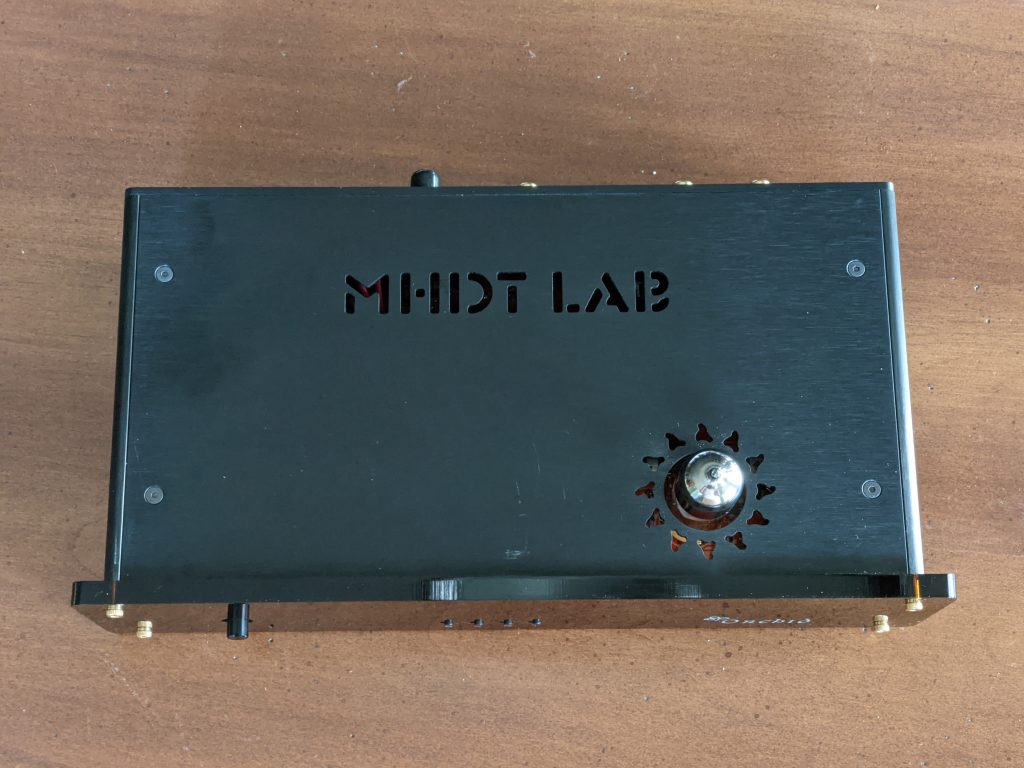
The second was that the Orchid often fell short of my expectations for bass reach and punch. The impact this had varied from genre to genre, track to track. There were times (like with Abraham Alexander) that the lack of bass that I grew to know was off-putting. While the rest made up for that and did a great job of “hiding” that fact, it was still a shortcoming.
Finally, the Orchid did a great job with placing voices and instruments within the sound-stage. Never once did I have to think about where something was coming from. I think this is especially important considering the use of a vacuum tube in the output stage. Sometimes those details can get lost, but not here. Well done.
Compared to the S4
I’ve made a lot of references to the Audial S4, who stands in direct(ish) competition with the Orchid. Do I think the Orchid is better than the S4? No.
Let me explain. I think in every category but mid-range embellishment (due to that sweet, sweet vacuum tube), the S4 bests the Orchid in all areas that I care about. That is to say that bass extension and punch, linearity in frequency response, and absolute sound-stage are the most important characters for me in a DAC. If I were mainly concerned with acoustic or small scale music though, I think I would tip my hat to the Orchid.
The two DAC’s fundamentally appeal to different crowds. Where the S4 represents the pinnacle of TDA1541 design and absolute neutrality, the Orchid presents the monolithic chip in a different light, one that is a little more forgiving of audio recordings and one that favors certain types of music.
It should be noted that the S4 is a bit more expensive than the Orchid. While both are still very reasonably priced in the world of audio, it will definitely be a consideration for the cost orientated audiophile. In my mind, that difference is well worth the cost of admission. That said… if I had the Orchid and its style matched the music that I listened, I don’t think I would look any further.

